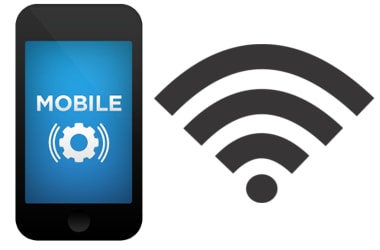
Scientists have developed a new wireless internet based on harmless infrared rays.
This is 100 times faster than existing wi-fi network and has the capacity to support more devices without getting congested.
Slow Wi-Fi is a source of irritation that nearly everyone experiences.
Wireless devices in the home consume ever more data, and it is only growing, and congesting the wi-fi network, researchers said.
The wireless network developed by researchers at Eindhoven University of Technology in The Netherlands not only has a huge capacity - more than 40 Gigabits per second (Gbit/s) - but also there is no need to share since every device gets its own ray of light.
The system is simple and cheap to set up.
The wireless data comes from a few central 'light antennas', for instance mounted on the ceiling, which are able to very precisely direct the rays of light supplied by an optical fibre.
The antennas contain a pair of gratings that radiate light rays of different wavelengths at different angles ('passive diffraction gratings').
Changing the light wavelengths also changes the direction of the ray of light. Since a safe infrared wavelength is used that does not reach the vulnerable retina in your eye, this technique is harmless.
As a user, if the smartphone or tablet moves out of the light antenna's line of sight, then another light antenna takes over.
The network tracks the precise location of every wireless device using its radio signal transmitted in the return direction, they said.
It is a simple matter to add devices: they are assigned different wavelengths by the same light antenna and so do not have to share capacity.
Moreover, there is no longer any interference from a neighbouring wi-fi network.
Current wi-fi uses radio signals with a frequency of 2.5 or five gigahertz.
The new system uses infrared light with wavelengths of 1,500 nanometres and higher.
This light has frequencies that are thousands of times higher, some 200 terahertz, which makes the data capacity of the light rays much larger.
Researchers managed to achieve a speed of 42.8 Gbit/s over a distance of 2.5 metres.
The system has so far used the light rays only to download; uploads are still done using radio signals since in most applications much less capacity is needed for uploading.
Gigahertz: Know More- The gigahertz, abbreviated GHz, is a unit of alternating current (AC) or electromagnetic (EM) wave frequency equal to one thousand million hertz (1,000,000,000 Hz).
- The gigahertz is used as an indicator of the frequency of ultra-high-frequency (UHF) and microwave EM signals.
- It is also used, in some computers, to express microprocessor clock speed.